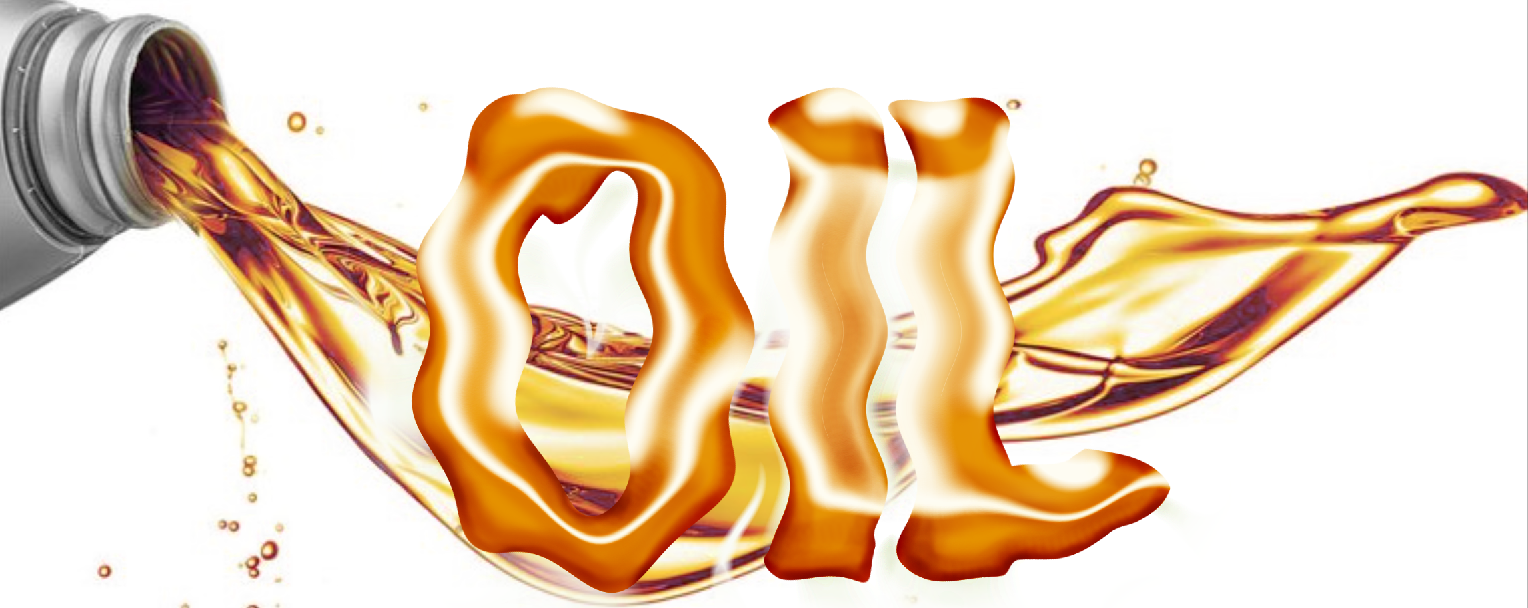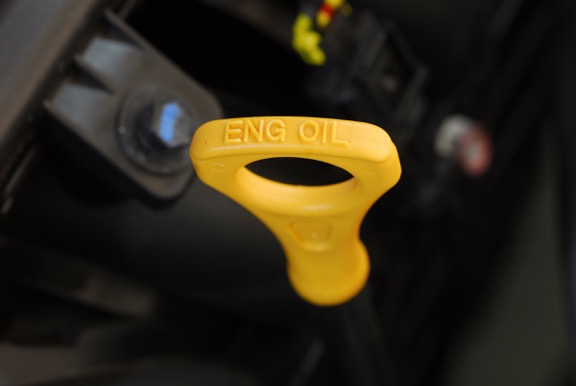
Oil by the barrel, oil in abundance and oil in short supply, like it or not, it is a vital part of our lives and a vital part of our cars engine. Without oil, not enough oil or improper oil pressure, your engine will suffer very quickly from lack of lubrication. Not only does oil provide a slippery surface, it creates a thin barrier between two moving parts to reduce friction. Further still, oil acts as a coolant.

As with the many questions on what is the proper gasoline and octane to use, oil brand, weight and quantity needed and how often to change it litters the internet. Perhaps it’s worth repeating, there is no better place for an answer than your owners manual.
When changing the oil in a 1975 450SL, the manual states the following: MAXIMUM Crankcase Capacity 7.5L or 7.93 quarts, and MINIMUM Crankcase Capacity 5.5L or 5.81 quarts, Oil Filter Capacity: 0.75L or 0.79 quarts, Oil Cooler Capacity: 0.4L or 0.42 quarts. The total oil capacity for this model would be 9.1L or 9.615 quarts. Remember the just over 9.5 quarts is for a completely dry system and it is filled to the MAX operating level. While your system will be depleted of most oil when doing an oil change, the system is still not completely empty and therefor you should consider not automatically adding 9.6 quarts. Consider adding 8 quarts to begin and then start the car. Allow the engine to run for a minute while making sure your oil pressure gauge registers full pressure within a few seconds. After a minute turn the engine back off and check the oil level. Remember the oil does not need to read at the MAX mark for the engine to be properly lubricated. This information however may not hold true if you have an oil leak and are losing oil regularly. Regardless of improper oil loss, check your oil at every fill up.
Our next item of business after draining the oil completely, (be sure to have a new washer for your drain plug) is to obviously refill with a quality oil. As with gasoline, oils by brand have been given various additives developed by the various suppliers. Castrol for example, is a good quality oil but so is Mobil 1. We then have the question of whether or not we use conventional or synthetic or a blend and do we supplement with additives to meet the needs of our older engines.
The right oil for your Mercedes
Here’s the story on all that. Any major brands of oil will meet basic specifications for additives (detergents) and weight. Again, like gasoline, not all oils have the same additives and there are some oils that I believe are of higher quality. So what oil should I use?
Perhaps we can simplify what brand of oil to use like this. If you have the money, use RedLine an exceptional and proven product. Redline retails for about $50/gal. for a 5W-40. Other oils to consider that are also very good quality oils in the lower price range are, Mobil 1 Synthetic or Castrol GTX at $22/gal. and $18/gal. respectively.
MERCEDES OIL CHANGE RECOMMENDATIONS
Mercedes-Benz recommends a 10W-40 as a year round oil for moderate climate areas for the 1975 450SL. In extreme heat, Mercedes says you can use either a 10W-50 or 20W-50. In contrast in extreme cold, it is recommend to use a 5W-20. Regardless of what weight you need to run, be sure it is the correct weight for the climate you are in.
WHAT’S WEIGHT GOT TO DO WITH OIL FOR YOUR MERCEDES?
When a manufacturer recommends a 10W-40 or multi-grade for example, it is helpful to understand what it is you are actually getting. In simple terms, the first number the “10W” is the weight (thinness) when cold “10” and the “W” standards for “winter”, and so it represents how the oil flows or it’s ability to remain thin enough to move about the engine when it is very cold. The second number “40” in this case, is how thick the oil will remain to protect the engine when it is hot or at normal operating temperatures. Both numbers have been determined by the cars manufacturer and needs to always be carefully considered when altering the oil weight.
SUPLEMENTS
Other options still abound with additives that enhance your oil of choice. If Redline were to be used, I would suggest skipping additional additives, other than perhaps increasing the zinc content. As it stands with more standard brand oils, you might consider using one of several BlueChem products to enhance the stability and lubricity of the base oil. I will be discussing the zinc and oil additives in a subsequent article.
Regardless of oil brand and additives and long before synthetic oils came about, cars were getting hundreds of thousands of miles on conventional oils with a fraction of the additives we have available today. While we do have better technology to reduce friction and keep working parts cleaner, the most important thing to do to keep an engine at peak performance, is to change the oil as the manufacture recommends.
TIME FOR AN OIL CHANGE
Under normal operating conditions Mercedes, recommends changing the oil “every 5,000 miles or at least twice yearly, and under extreme conditions, (very short distances, in heavy traffic, and dusty hot conditions) the oil should be changed every 2,000 to 2500 miles.” A filter change however is not necessary according to Mercedes if the oil is changed at the 2,000-2,500 mile interval but should be changed at the 5,000 mile mark regardless. Remember, check your owners manual for your specific model. Just because you have a 450SL does not mean that year to year specifications remained the same.

And last but not least and an item that doesn’t get the deserved attention, but is truly critical — the oil filter. Two great oil filters that have stood the test of time are Mann and Hengst. WIX also makes a quality filter for the 450SL but is not any less expensive than the prior two. It should be remembered that a cheap filter may not provide good filtration and hold up as well under the extremes of heat and pressures, allowing contaminants to circulate through your engine.
While it can truly be daunting to visit your local auto parts store only to gaze at a wall of oil and filters and additives, don’t over analyze it. Find a quality system you feel comfortable with and stick with it. Change your oil as prescribed and you will more than likely have a car that will be ready to pass on to the next generation for another 100,000 miles.
If you are going to use additives, always add them prior to refilling the crank case with oil. By doing this you will be able to more easily adjust your oil level accordingly.
Oils to consider
- RedLine
- Castrol GTX
- Mobil 1
My take on
All that said, I will be running RedLine 5W-40 as a year round oil in my 1975 450SL. Several reasons, While it does not get extremely gold here in the Desert Southwest, we can have unseasonably cold 25°F mornings and on occasion 40°F days, hence the “5W” to get oil flowing to all the right places much faster. In contrast, we do have about a 2-3 month period with temperatures in the 110°-120°F range hence the “40”. I must admit, when the temperature goes much above 110°F I do not drive any of my classics as I do not believe it is worth the additional stress on the overall car.
REMINDER: When doing your own oil/fluid change, always dispose of your oil and all automotive fluids properly. Most all auto parts stores, city, county, take used fluid, as will many oil change shops. You may also check with the business where you recycle your fluids to find out what you can and can’t mix. My mechanics shop for example will take a mixture of ATF, Motor Oil, Coolant, Power Steering Fluid and Gear Oil all in one. The company that picks up their waist fluids separates them for recycling, which makes it very convenient.











